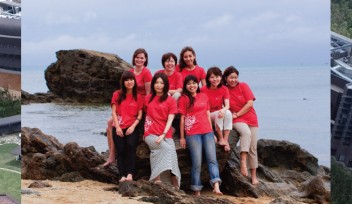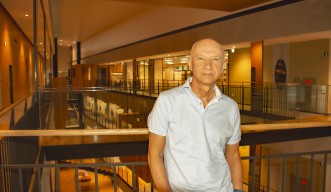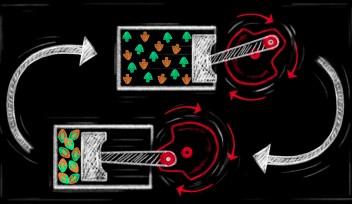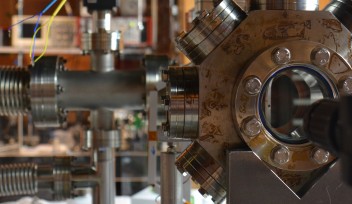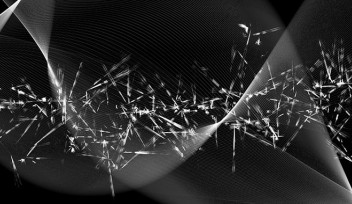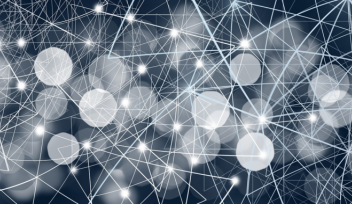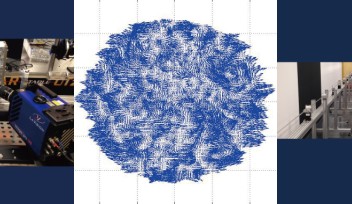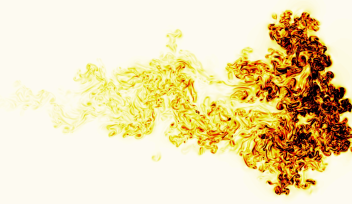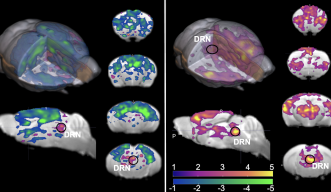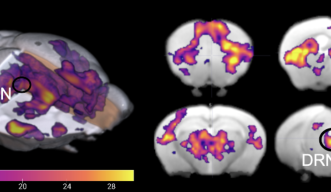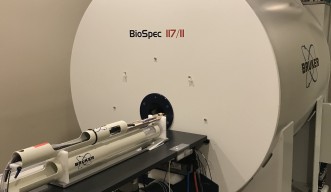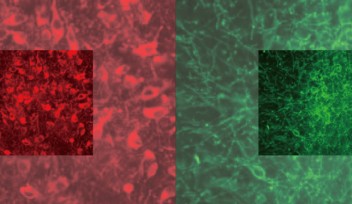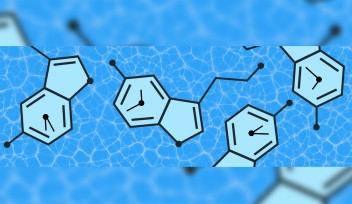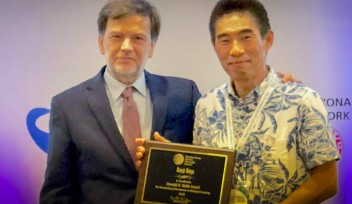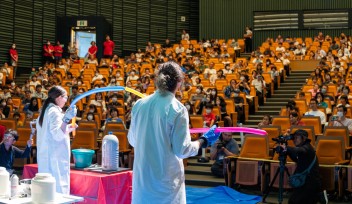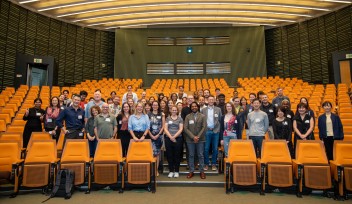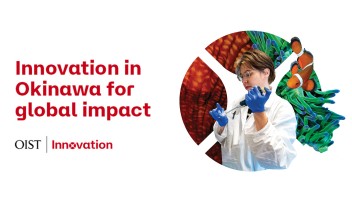Outreach Updates
Taking care of caregivers of children with ADHD

Attention deficit hyperactivity disorder (ADHD) is a common neurodevelopmental disorder characterized by elevated levels of inattention, impulsivity, and hyperactivity that can impair academic and social functioning. ADHD is also associated with increased levels of parenting stress, less effective parenting practices, and can disrupt the parent-child relationship. The importance of support for parents of children with ADHD is widely acknowledged in Japan, but specialized parent training programs targeting ADHD have not been available.
However, a new program developed at the Okinawa Institute of Science and Technology (OIST) aims to reduce the strain on families of children with ADHD by helping mothers improve their ADHD-specific parenting skills, as well as developing confidence in their own parenting. Dr. Shizuka Shimabukuro, a researcher in the Human Developmental Neurobiology Unit at OIST, has worked to develop and evaluate Well Parent Japan (WPJ). WPJ is a 13-week group-based parent training program that focuses on enhancing mothers’ psychological wellbeing and teaching culturally tailored parenting skills for ADHD. Dr. Shimabukuro was recently recognized with an award from the Japanese Ministry of Education, Culture, Sports, Science and Technology (MEXT) for her long-standing work with the program. She is the lead author on a recently published paper in the Journal of Child Psychology and Psychiatry that evaluates the efficacy and cost effectiveness of WPJ compared with treatment as usual for Japanese mothers of children with ADHD.
“We implemented WPJ across three sites in Japan and found that the program was more effective than treatment as usual in these settings, as well as being moderate in cost to deliver,” explains Dr. Shimabukuro, and adds that, importantly, “the study was conducted in regular hospitals and a developmental support center, not the research lab, as we wanted to test if it worked when delivered in the community.”

Finding solace in community
The group-based approach was found to be very effective in providing social support and encouraging shared learning amongst the participating mothers, who might otherwise feel isolated or hesitate to seek help in dealing with their children’s difficulties. “The primary caregiver in Japan is usually the mother, and because they hesitate to put their own needs ahead of others, they often feel alone with their problems. We wanted to invite them to a comfortable, shared space where everyone is dealing with similar issues and can safely share their struggles and concerns, as well as learn from and support one another,” explains Dr. Shimabukuro.
Just as the mothers came together to share and address their parenting difficulties, so is WPJ the product of ten years of co-production and collaboration between researchers, clinicians, parents, and children with ADHD, drawing on international literature and the voices of Japanese parents who participated in the studies. Professor Gail Tripp, head of the unit and another author on the paper, describes the present study as an exercise in crossing divides: “We worked closely with a local hospital here in Okinawa, two university hospitals in other parts of Japan, an economist in Tokyo, and a research colleague in the UK. OIST Innovation supported the study and our efforts to move toward broader implementation. It’s a highly collaborative effort, and I’m glad to see it coming to fruition.”
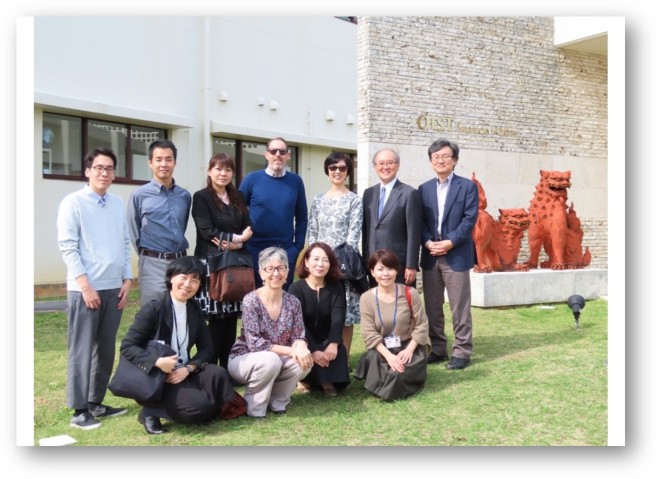
From lockdown to the future
The process of testing the efficacy of WPJ was not without its challenges. The clinical trials began just before the onset of the unexpected coronavirus pandemic, which meant they had to adapt the original research design to the changing social conditions. “We were trying to coordinate the trials across three sites, with the regulations constantly changing with the nature of the pandemic,” as Dr. Shimabukuro recounts it. “I’m very grateful and proud of the work that the research group leaders put into first and foremost ensuring the health and safety of our research participants, while also ensuring robust data.”
Despite the difficulties faced, the researchers were pleased to see that WPJ was effective in ‘the real world’, with the program outperforming treatment as usual in reducing parenting-specific stress, improving parenting efficacy and reducing family strain. “Considering the disruptions brought by COVID, we had an extraordinarily high participant retention,” explains Prof. Tripp, adding that “comparable studies from abroad in non-pandemic conditions usually report a participant attrition rate – the rate of participants of dropping off during the study – of about 15%, but ours was just around 7%.” Dr. Shimabukuro suggests that “our results show how much parents engaged with the program and valued the time and space to talk about their children, even during the height of the COVID crisis.”
The high participant retention and the positive results confirms the value of programs like the WPJ in Japan. As Dr. Shimabukuro puts it, “as parents are agents of change for their children, it is very important to take care of them before they can take care of others.”
Dr. Shimabukuro is now turning her focus to another environment where children with ADHD spend much of their time – schools. “Teachers are also important agents of change for the children, and the children spend so much of their time with them – but like parents, they often face the challenges that ADHD can bring alone. It would be much easier for children with ADHD to establish good behavioral habits if parents and teachers dealt with any problems that arise consistently,” explains Dr. Shimabukuro.
The team is now running a feasibility study for implementing an educational video series, a modified version of WPJ, for teachers in schools. Both to educate the teachers about what it means for a child to have ADHD and how to adjust their teaching techniques to accommodate this, but also to – like with the mothers – provide a space for the teachers to share their professional insights and experiences of accommodating children with ADHD, with one another. As licensed clinical psychologists, Dr. Shimabukuro and Prof. Tripp are working to combine their clinical experience with their research in the lab for the good of the children, their families, and their communities. In Dr. Shimabukuro’s words, “we are ultimately hoping to help enhance people’s understanding of ADHD, improve the quality of support and increase the number of places to receive help in the community – we want to help these families under strain.”
If you're interested in the ADHD research at OIST, you can read more and contact the Children's Research Center here. For press enquiries, please contact us here.
Article Information
Specialties
Research Unit
For press enquiries:
Press Inquiry Form
Related News
Using entangled particles to create unbreakable encryption
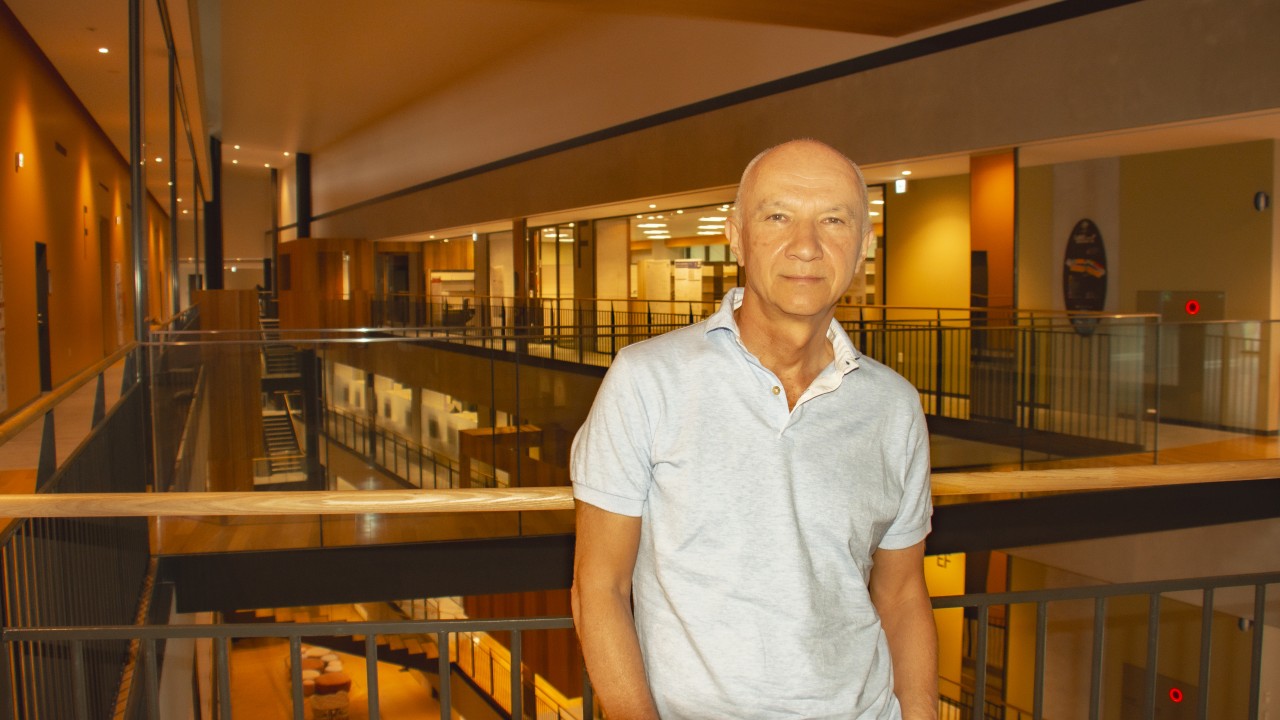
The discovery of quantum mechanics opened the door to fundamentally new ways of communicating, processing, and protecting data. With a quantum revolution well underway, long unimaginable opportunities are coming within our reach. From the fundamental questions on how the universe works to secure communication – it is quantum mechanics that holds our future’s solutions. Professor Artur Ekert, pioneer in the field and father of quantum cryptography, has been Professor (Adjunct) and the head of OIST’s Quantum Information Security Unit since April 2021. We interviewed Professor Ekert, who is now able to stay more frequently at OIST after the pandemic.
With a background in applied mathematics, he had not planned to work in physics until stumbling upon “The Feynman Lectures on Physics” in a library – “I read it and was completely hooked!” Prof. Ekert says. With this newly found passion, he began working towards his PhD at the University of Oxford, where he also met his mentor David Deutsch, the pioneer of quantum computation. At the same time, he came across another influential paper on quantum entanglement, written by the famous physicist Alain Aspect.
“I was deeply impressed – the paper showed that quantum mechanics is inherently unpredictable. This was my starting point when I understood that this can be used for secure communications,” says Prof. Ekert. But before these groundbreaking experiments of Aspect and colleagues, there was fierce debate about whether experiments in quantum mechanics are inherently unpredictable or not. While it was possible to get statistical predictions about the outcomes of these experiments, determinate statements always remained out of reach. “Now the question was, do we deal with true randomness in quantum mechanics or just our inability to yet predict outcomes well enough?” explains Prof. Ekert. It turned out that the answer to this question also held the key to the development of quantum cryptography.
Is there true randomness in the universe?
Random events can be categorized into two different types, which scientists refer to as objective and subjective randomness. “For example, something might appear random to you but not to me because I have more information that allows me to understand and predict the event. If you don’t have access to this additional information the event will appear random to you – this is what we call subjective randomness,” explains Prof. Ekert.
Surprisingly, the classical example of a coin toss belongs to the category of subjective randomness. With enough knowledge about the initial conditions, the coins' movement and structure, the air circulation in the room and more, the result of any coin toss would become perfectly predictable. “Objective randomness on the other hand is an event for which you cannot predict the outcome even if you knew absolutely everything about it,” Prof. Ekert says.
Whether quantum physics has elements of this objective randomness was debated among scientists in the 20th century and got some very prominent opposition from Albert Einstein. “He thought that we can’t predict the outcomes of experiments in quantum mechanics because we lack information, not because they are inherently unpredictable,” Prof. Ekert says. If that were correct and those missing pieces of information could be identified, the outcome of experiments in quantum mechanics should have become predictable. “He called this missing information hidden variables,” explains Prof. Ekert.

This theoretical debate raged on for roughly 30 years, until scientist John Bell came up with a testable hypothesis, now also referred to as Bell’s inequality. This test, among other uses, made it possible to answer the question if quantum events are truly random or not. This is how it works in a nutshell; during a suitable experiment using entangled photons a specific parameter is measured. If this parameter is outside an expected range, it supports that events on a quantum level have an objectively random component, but if it falls within the expected range, then Einstein’s objections are correct and there are hidden variables.
“The problem was that when Bell published his work, it wasn’t yet possible to perform these highly complicated experiments,” says Prof. Ekert. With the math but not the technical means to perform the test, the debate remained unanswered for another decade. Until the 1970s, when these experiments finally became possible, John Clauser was among the first to perform them. “When he does these first experiments, he observes a violation of Bell’s inequality which supported the fact that nature at its foundation is random,” Prof. Ekert says.
But with the still limited technology of the time, this exciting finding remained preliminary at first. In fact, certainty on the matter was not reached until the late 90s. Among others, it was the groundbreaking work of Alain Aspect, Nicolas Gisin, Ronald Hanson, Jianwei Pan and Anton Zeilinger, on the nature of quantum entanglement and the Bell inequalities, that confirmed the fundamental workings of quantum mechanics for good - showing that there is true randomness in quantum events. In 2022 Aspect, Clauser and Zeilinger shared a Nobel prize for their pioneering experimental efforts.
From quantum mechanics to quantum cryptography
Upon learning about all this while working towards his PhD, Prof. Ekert realized that randomness can be used to create a way to develop unbreakable encryption. Before secure communications went quantum, cryptography had already made it possible to transmit information safely, except for one crucial pitfall.
“Let’s imagine you want to transmit information safely to another person. In that case, both of you need something called a cryptographic key – which is a completely random sequence of ones and zeros. This key needs to be kept strictly secret!” says Prof. Ekert. While the key is random and therefore meaningless, it will later allow its holder to decode the sent message.

But this traditional method of encryption has a major safety obstacle: Keeping the key secret. Should access be gained unauthorized, any messages sent could be decoded and how could there ever be complete certainty that nobody had gained access to the secret keys?
Classically this problem was addressed by using protected lines for communication and through the work of cybersecurity specialists implementing various safety features to protect encryption keys. “But you see, even with the best security in place, you could never be 100% sure that nobody had gotten access,” Prof. Ekert points out.
All this changed when the experiments on Bell’s inequality showed that quantum mechanics has an inherently random component. “A solution is to use quantum keys. These are generated using entangled photons,” Prof. Ekert explains. This method of generating a cryptographic key makes it possible to test if anyone has had unauthorized access by using Bell’s theorem. “If your key violates Bell’s inequalities, you can be sure nobody had access to your key,” Prof. Ekert says. With this, he had discovered an entirely novel way of securing communication: Quantum cryptography.
This encryption method is now more important than ever, as progress in the development of quantum computers will make classical encryption less safe - a problem for sensitive data, for example in the medical or financial sector. Here quantum cryptography offers a way to ensure protection, but it won't likely become the standard for all communication. “Quantum cryptography will not completely replace classical methods, because there is not always a need for perfect security. Not every car needs to be up to Formula One standards - it is the same for encryption,” Prof. Ekert says.
Nevertheless, developing modern cybersecurity strategies that keep up with today's complex technological world is a key challenge for science and society alike, and one of the reasons that brought Prof. Ekert to OIST. “I am here to help create a vibrant quantum and cyber security community in Okinawa and I also want to help educate people about cybersecurity and improve data protection,” says Prof. Ekert.
A second focus will be his research on the concept of randomness, for which OIST offers ideal conditions. “I appreciate the nice and quiet environment in Okinawa.” Prof. Ekert points out. While it is now a fact that objective randomness plays a role in quantum mechanics, Prof. Ekert’s research here at OIST tackles a maybe comparatively fundamental question about the nature of our universe: "I am interested in why things are random,” he says.
Specialties
Research Unit
For press enquiries:
Press Inquiry Form
Related News
Surprising properties of elastic turbulence discovered

Blood, lymph fluid and other biological liquids can have surprising and sometimes troubling properties. Many of these biological solutions are non-Newtonian fluids, a type of liquid that is characterized by a non-linear relationship between stress and strain. Consequently, non-Newtonian fluids don’t necessarily behave as one would expect from a liquid. For example, some of these peculiar fluids deform when touched lightly but will act almost as a solid when a strong force is applied.
And biological solutions are no exception when it comes to unique properties - one of them being elastic turbulence. A term that describes the chaotic fluid motion that results from adding polymers in small concentrations to watery liquids. This type of turbulence exists only in non-Newtonian fluids.

Its counterpart is classical turbulence, occurring in Newtonian fluids, for example in a river when the water at high speed flows past a bridge's pillar. While mathematical theories exist to describe and predict classical turbulence, elastic turbulence yet awaits such tools despite their importance for biological samples and industrial applications. “This phenomenon is important in microfluidics, for example when mixing small volumes of polymeric solutions which can be difficult. “They don’t mix well because of the very smooth flow,” explains Prof. Marco Edoardo Rosti, head of the Complex Fluids and Flows Unit.
So far scientists have thought of elastic turbulence as completely different from classical turbulence, but the Lab’s most recent publication in the journal Nature Communications might change this view. Researchers from OIST worked collaboratively with scientists from TIFR in India and NORDITA in Sweden to reveal that elastic turbulence has more in common with classical Newtonian turbulence than expected.
“Our results show that elastic turbulence has a universal power-law decay of energy and a so far unknown intermittent behavior. These findings allow us to look at the problem of elastic turbulence from a new angle,” explains Prof. Rosti. When describing a flow, scientists often use a velocity field, “we can look at the distribution of velocity fluctuations to make statistical predictions about flow,” says Dr. Rahul K. Singh, the publication’s first author.
When studying classical Newtonian turbulence, researchers measure velocity over the entire flow and use the difference between two points to create a velocity difference field. “Here we measure velocity at three points and compute the second differences. First, a difference is computed by subtracting fluid velocities measured at two different points. We then subtract two such first differences yet again, which gives us the second difference,” explains Dr. Singh.
This type of research came with an additional challenge - running these complex simulations requires the power of advanced supercomputers, “our simulations sometimes run for four months and output a huge amount of data,” says Prof. Rosti. This added level of detail led to a surprising finding - that the velocity field in elastic turbulence is intermittent. To illustrate what intermittency in flow looks like, Dr. Singh uses the electrocardiogram (ECG) as an example.
“In an ECG measurement the signal has small fluctuations interrupted by very sharp peaks. This sudden large burst is called intermittency,” says Dr. Singh. In classical fluids, such fluctuations between small and very large values had already been described but only for turbulence that occurs at high flow speeds. The researchers were surprised to now find the same pattern in elastic turbulence occurring at very small flow speeds, “at these low speeds we did not expect to find such strong fluctuations in the velocity signal,” emphasizes Dr. Singh.
Their findings are not only a big step towards a better understanding of the physics behind low velocity turbulence but also lay the foundations for developing a complete mathematical theory describing elastic turbulence. “With a perfect theory, we could make predictions about the flow and design devices that can alter mixing of liquids. This might be useful when working with biological solutions,” says Prof. Rosti.
Article Information
Specialties
Research Unit
For press enquiries:
Press Inquiry Form
Related News
Lighting up the brain: What happens when our ‘serotonin center’ is triggered?
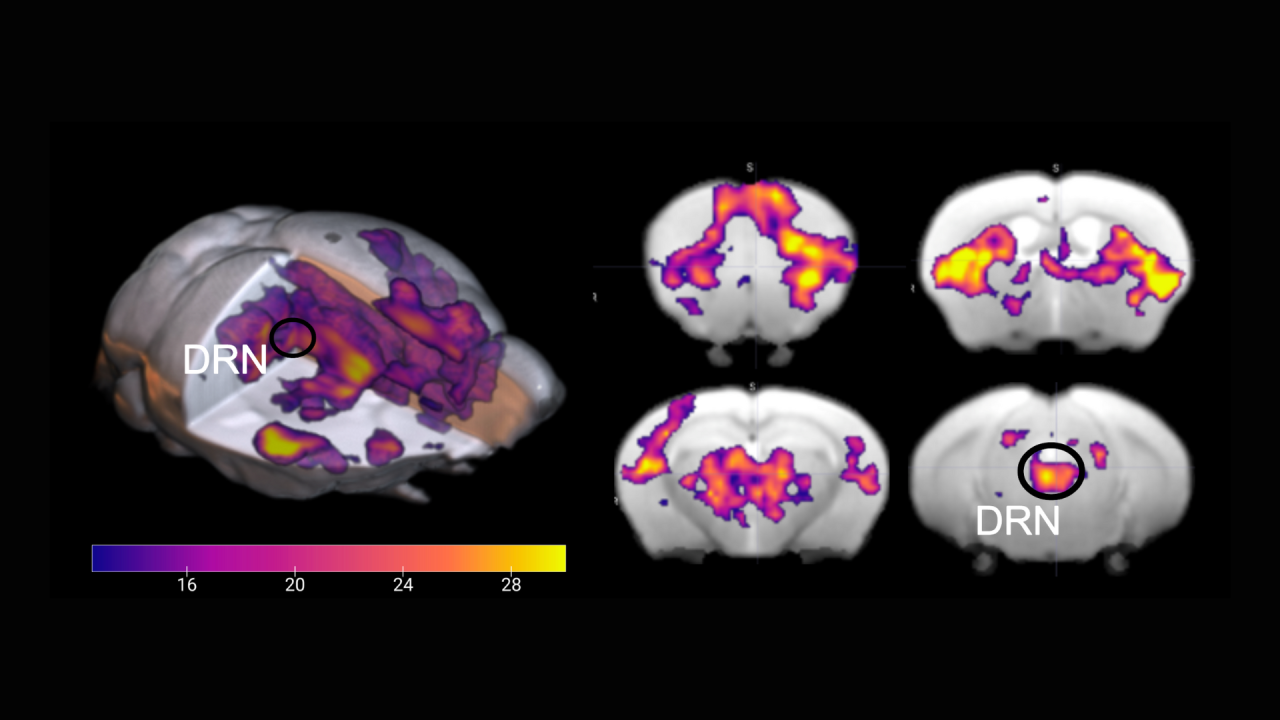
Our brains are made of tens of billions of nerve cells called neurons. These cells communicate with each other through biomolecules called neurotransmitters. Serotonin, a type of neurotransmitter, is produced by serotonin neurons in our brains and influences many of our behavioral and cognitive functions such as memory, sleep, and mood.
Using mice, scientists at the Okinawa Institute of Science and Technology (OIST) and their collaborators from Keio University School of Medicine have studied the main source of serotonin in the brain – the dorsal raphe nucleus (DRN). By studying how activating the brain’s ‘serotonin center’ affects awake animals for the first time, they found that serotonin from the DRN activates brain areas that affect behavior and motivation.
“Learning about the brain’s serotonin system can help us understand how we adapt our behaviors and how mood therapy medication works. But it was hard to study how serotonin from the DRN affects the entire brain. First, because electric stimulation of the DRN can also activate neurons that don’t use serotonin to communicate with each other, and second, using drugs can affect other serotonin in the brain,” explained Dr. Hiroaki Hamada, a former PhD student at OIST’s Neural Computation Unit and lead author of a paper on this study published in the journal Nature Communications.
Previous studies by researchers at the Neural Computation Unit have shown that serotonin neurons in the DRN promote adaptive behaviors in mice associated with future rewards. Dr. Hamada and his collaborators wanted to understand the mechanisms in the brain that cause these adaptive behaviors.
“We knew that DRN serotonin activation has strong effects on behavior, but we didn’t know how this serotonin activation affects different parts of the brain,” Prof. Kenji Doya, leader of the Neural Computation Unit, stated.
Observing the entire brain’s response to DRN serotonin activation
The researchers used a novel technique called opto-functional MRI to address this question. They used a method called optogenetics to selectively activate serotonin neurons in the DRN with light and observed the entire brain’s response using functional MRI (Magnetic Resonance Imaging). They utilized the latest MRI scanner with a strong magnetic field to achieve the high resolution needed to study the small brains of mice. The mice were put in the MRI scanner and serotonin neurons were stimulated at regular intervals to see how this affected the whole brain.
They found that DRN serotonin stimulation causes activation of the cerebral cortex and the basal ganglia, brain areas involved in many cognitive functions. This result was very different from a previous study performed under anesthesia. Additionally, the brain's response to serotonin stimulation is strongly linked to the distribution of serotonin receptors (proteins activated by serotonin) and the connection patterns of DRN serotonin neurons.
“We clearly see from the high-field MRI images which areas in the brain are activated and deactivated during the awake state and under anesthesia when we activate serotonin neurons in the DRN,” Dr. Hamada said. “A previous study showed that the cerebral cortex and the basal ganglia were mostly deactivated under anesthesia, which we also observed, however, in awake states these areas are significantly activated.”



The cerebral cortex and the basal ganglia are parts of the brain critical for many cognitive processes, including motor activity and behaviors to gain rewards such as food and water. Activation of DNR serotonin neurons can therefore lead to changes in motivation and behavior.
Patience and stimulating your own serotonin
Combining the new technique of high field MRI and optogenetics presented many obstacles that Dr. Hamada had to overcome. “We introduced and adapted a method previously used by our collaborators and established many new procedures at OIST. For me, the main challenge was using the new MRI machine at the time, so I needed to have patience and stimulate my own serotonin. I started doing a lot of exercise after that,” he laughed.
Seeing activations in the DRN for the first time was a standout moment for Dr. Hamada. In the beginning, he used the same light intensity that his collaborators used, but this was too weak to see the brain responses in the MRI. He then used bigger optical fibers and increased the intensity to stimulate the DRNs.
Prof. Doya noted that the next important milestone to achieve is understanding exactly how this brain-wide activation of serotonin occurs: “It’s important to find out what is the actual molecular mechanism allowing this activation in our brain. People who would like to get better at adjusting their behavior and thinking in different situations could also find it helpful to learn more about how serotonin helps control our moods.”
To read more about research on the effects of serotonin from Prof. Doya’s unit, please see here.
Article Information
Research Unit
For press enquiries:
Press Inquiry Form
Related News
OIST-supported startups awarded grants by The Bank of Okinawa
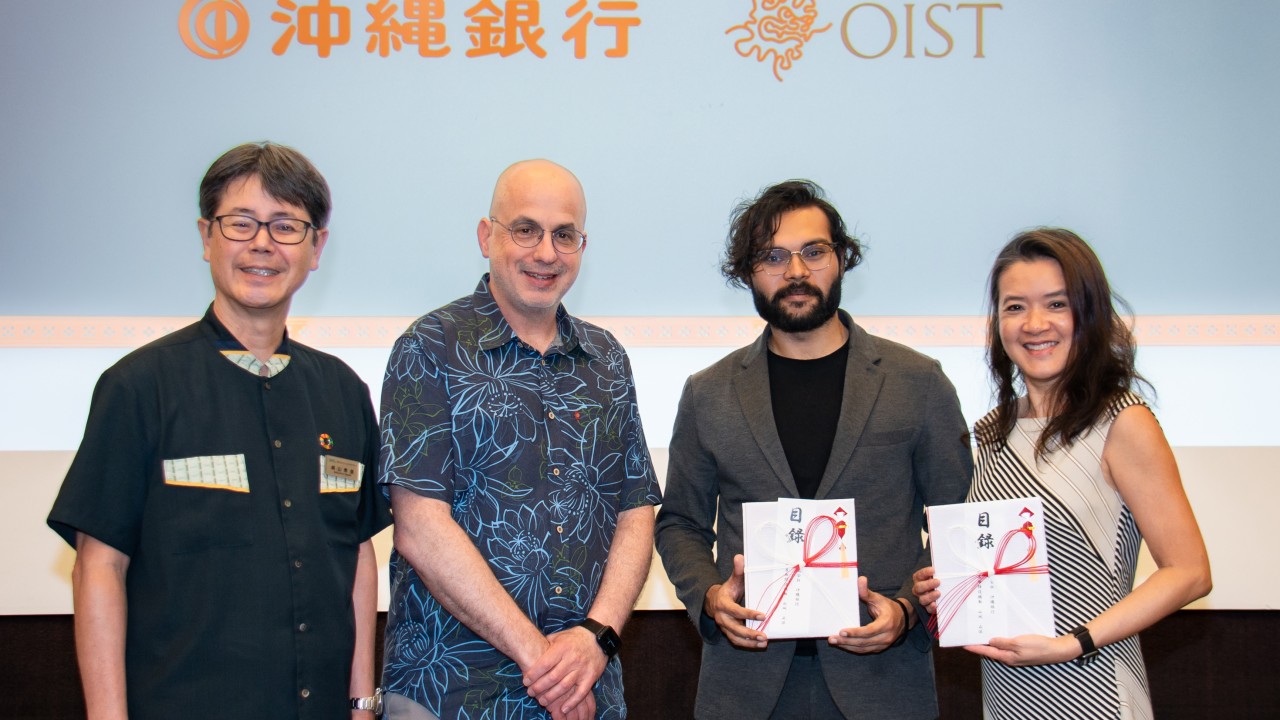
Two startup companies supported by the Okinawa Institute of Science and Technology Graduate University (OIST) have received a combined total of two million yen in grants from The Bank of Okinawa. The grants were awarded at a ceremony held on May 21 at the OIST campus.
In 2021, OIST and The Bank of Okinawa signed a Memorandum of Understanding to work together on various initiatives, including supporting the OIST Innovation Accelerator, fostering an innovation ecosystem in Okinawa, and encouraging sustainable growth in the local economy. Since then, the two institutions have collaborated closely to make these goals a reality.
The grants were awarded to two companies: Sylcast, which emerged from a research project at OIST, and Vyorius Japan, which is developing a control system for autonomous drones. Both companies have been part of the OIST Innovation Accelerator, from which they launched their businesses in Japan. This April, they began full-scale operations from their new base in the OIST Innovation Incubator, located on the OIST campus.

The grant award ceremony was attended by a distinguished group of stakeholders, including Yasumi Sakiyama, Managing Director of The Bank of Okinawa, and Gil Granot-Mayer, Executive Vice President for Technology Development and Innovation at OIST. During the event, representatives from each startup shared an overview of their respective business ventures.
Sylcast is developing forest monitoring technology that uses data collected from trees to evaluate forest health and help predict future changes. This technology, which emerged from an OIST research project, sets out to promote sustainable forest environments. Julie-Ann Lucchetti, a member of the team, stated, "Our startup journey has just begun. The partnerships being developed around OIST are significantly contributing to making Okinawa's ecosystem a compelling hub for us in Japan, and today I am reminded of the power of partnership. None of our achievements so far would have been possible without the valuable support and encouragement from the Okinawan ecosystem, especially The Bank of Okinawa."
Vyorius Japan is developing a system capable of controlling multiple autonomous drones simultaneously, enabling new applications for drones in logistics, agriculture, disaster response, and other areas. The company was founded in India in 2021 and has already expanded to Singapore and other regions. It now aims to enter the Japanese market. Nishant Singh Rana, a member of the team, discussed the company's future goals, stating, "Our goal is to streamline and optimize logistics, agriculture, and other public safety operations through the use of drones, making them faster, more efficient, and environmentally friendly. This grant will enable us to expand our operations, establish key partnerships, and invest in research and development to enhance our drone technology. We are confident that with the support of the Bank of Okinawa, we will be able to achieve new heights of success within Japan and beyond."
This marks the third time that The Bank of Okinawa has awarded grants to OIST-supported startups. OIST and The Bank of Okinawa will continue working together to accelerate the development of a startup ecosystem in Okinawa and boost the local economy by fostering new industries.
Yasumi Sakiyama, Managing Director of The Bank of Okinawa, opened the ceremony with these remarks: "We believe that both teams have exceptional business ideas that can contribute to solving challenges not only in Okinawa but also globally. By continuing our collaboration with OIST, we aim to provide various forms of support to startups that help revitalize the region and address social issues. As a regional financial institution, we are committed to contributing to the sustainable development of Okinawa's economy."
Gil Granot-Mayer, Executive Vice President of OIST, shared his expectations for the future, stating that "the two startups recognized that Okinawa is a great place to launch their solutions, first to Asia, and then to the world. Moreover, the collaboration between OIST and The Bank of Okinawa is crucial for supporting these initiatives and establishing Okinawa as a hub of science, technology, and innovation. We are deeply grateful for the support provided by The Bank of Okinawa thus far and look forward to seeing this partnership continue to strengthen and expand in the future."
About OIST Innovation Accelerator
The OIST Innovation Accelerator is not your traditional accelerator program. We are an entrepreneurship training program, a bootcamp competition, and a startup incubator all rolled into one. We offer an entirely unique environment for the world's most innovative entrepreneurs to launch their startup companies.
In addition to continued support from Okinawa Prefecture, the program has received funding from the Japan Science and Technology Agency (JST) under the COI-NEXT initiative, doubling the program's capacity. This year, four teams were selected to participate. You can find more information about the new teams here.
Related News
Sounds of the Ryukyus resonates at OIST for the first time in four years

“Sounds of the Ryukyus”, which marks its 7th edition this year, was held on Sunday, March 17, at the Okinawa Institute of Science and Technology (OIST). The traditional Ryukyuan arts performance by the Traditional Music Association of the Nomura School of Ryukyuan Classical Music, was an annual event at OIST, but was canceled due to the COVID-19 pandemic. It was held for the first time in about four years, and the sound of beautiful Uta-sansin, koto, and drums echoed through the OIST Auditorium.
The Traditional Music Association of the Nomura School of Ryukyuan Classical Music is dedicated to the inheritance and development of traditional Okinawan culture and performing arts and celebrated its 40th anniversary in 2022. President Toshikazu Tamaki said, “OIST attracts staff and students from all over the world, and we want to provide an opportunity for people who do not normally have the chance to experience and enjoy traditional Ryukyuan culture. We are happy to be a bridge between the local and international communities through traditional performing arts.” The event was highly successful, and attended by OIST faculty and staff, as well as residents and tourists.


This year's performance featured ten programs, including performances of Ryukyuan classical music, Ryukyuan dance, and "Kumi odori" (combination dance consisting of lines, dance, and music).
Ryukyuan classical music is designated as an Intangible Cultural Property of Japan (Okinawa) and has been enjoyed by court nobles since the Ryukyu Dynasty. Today, it is performed not only within the prefecture but also by many people from other prefectures and even overseas. Kumi odori and Ryukyuan dance performed at Shuri Castle to entertain envoys from China are now recognized by the Japanese government as Important Intangible Cultural Properties. Furthermore, Kumi odori, which has a history of over 300 years, was registered as a UNESCO Intangible Cultural Heritage in 2010.

The programs were introduced by two OIST staff members, Misato Matsuda and Chiaki Chibana, in the Okinawan language “Uchinaguchi,” English, and Japanese. They are both members of the “Eedee” group,dedicated to promoting Uchinaguchi and Okinawan culture at OIST. Eedee means “working together” in Uchinaguchi. The audience was diverse, including men and women of all ages, who felt at home from start to finish, often seen smiling as they listened to the proceedings in Uchinaguchi, a language cherished by Okinawans.

Children also showcased the traditional performing arts which have been passed down from generation to generation in a charming yet powerful way. The youngest performer this time was five years old, and the oldest 90. This diversity was reflected in the audience as well.

OIST has over 1,300 staff and students from both local and international backgrounds, many of whom are training in Ryukyuan dance and traditional performing arts to become familiar with Okinawan culture. On this occassion, two Okinawan staff members, Ami Chinen and Naoko Tokumoto, graced the stage with their Ryukyuan dance performance.
OIST Professor Nic Shannon and staff members Taku Arai, Tomomi Okubo, Marina Kyan, and Meria Miller made a special appearance. They played the sanshin, a traditional Okinawan instrument, for the opening act. This performance was a collaboration with members of the Traditional Music Association of the Nomura School of Ryukyuan Classical Music. Ms. Miller, a dedicated member of the Traditional Music Association of the Nomura School of Ryukyuan Classical Music, is honing her skills on the sanshin. Her goal is to become a jikata, a person responsible for musical accompaniment in Kumi odori and Ryukyuan dance. During the intermission, she showcased her talent by delivering a captivating performance on the sanshin, complemented by her singing and the harmonious notes of the koto.
In the final performance, Kumi odori “Manzai Tichiuchi”, the familiar roles and powerful dialogue of the tatekata (actors) were combined with Ryukyuan music that expressed the detailed emotions of the tatekata through jikata, making the OIST Auditorium, usually used for research presentations and lectures, a special place to experience traditional performing arts.

Participants shared their positive experiences: One said, "I really enjoyed the performance; even my 8-month-old enjoyed it!” Another audience member stated, “I was happy to have the opportunity to listen to the classics at OIST. It was a great time.” A participant who was impressed by the multilingual host, said, "The host spoke in three languages: Uchinaguchi, English, and Japanese! I felt a close connection to OIST.”
"I had an image of OIST as a scientific institution, but I enjoyed learning about Ryukyuan culture,” one participant noted, and another was impressed by the campus, stating, "I was surprised at the unusual buildings and spacious grounds. I hope that many wonderful talents will emerge from here.” We received many similar positive comments.
(In Uchinaguchi) wattaa OISToo, namakaran uchinaanu shimajimankai kurachoomiseeru katagatatu eedeeshi umussaru muyuushi arikuri chukuti ichibusaibiin. (OIST will continue to work with the local community to create events that many people can enjoy.)
Written by: Minae Uehara
More photos of “Sound of the Ryukyus” are available on OIST's Flickr.
More events at OIST
On Wednesday, June 12, an Okinawa Memorial Day lecture titled, "From Onna Village to the World: A Message for Generations to Come“ will be held. Please join us.
Click here for event details.
Related News
Breaking ground: OIST starts construction on two new start-up incubator buildings

On the south-west corner of the Okinawa Institute of Science and Technology (OIST) campus, in Onna Village on the West Coast of Okinawa Island, lies a flat area of land, spanning about 17,000 square meters. Here, an ongoing initiative is set to propel innovation and entrepreneurial partnerships in Okinawa and Japan.
On March 19, OIST held a groundbreaking ceremony, known as Kikoshiki in Japanese, to mark the official commencement of construction for two new start-up incubator buildings. This ceremony, steeped in Japanese tradition, precedes the start of construction and involves the purification of the land and prayers for the safety and prosperity of the project. The event also highlights the essential cooperation and teamwork among project stakeholders, construction personnel, and members of the local community.
Since the inception of the OIST campus, the vision for this area was to create a research and development (R&D) zone where academia, industry experts, entrepreneurs, business professionals, government representatives, and investors could connect.
“It’s a community space designed for innovation, where professionals can work together, exchange ideas, and find solutions. The spaces will be used for initial project testing, promising start-ups, and stimulating more innovation,” Gil Granot-Mayer, Executive Vice President for Technology Development and Innovation, stated.
The new buildings will feature co-working spaces, wet and dry labs, conference rooms and more, and will be located opposite an existing, smaller incubation building, in operation since 2019. Together, these facilities will provide a nurturing environment for entrepreneurs to evaluate the potential of their start-ups and develop prototypes.


From proof-of-concept to breaking new ground
OIST’s flagship OIST Innovation addresses the gap between basic research and real-world implementation. Often, promising ideas and early-stage projects struggle to bridge this gap. The division's goal is to mitigate this challenge by focusing on targeted activities that elevate technology development to solve the world’s most urgent problems. Additionally, the division aims to work with stakeholders who can support and enhance the entire innovation process and establish strong public-private-university partnerships.
“Currently we have a 500 m2 incubator building that has proved to be a successful proof-of-concept. It’s attracted many startups and served a lot of our own growing community of entrepreneurs, but now we need to expand to create a better space to encourage creativity. These new buildings will provide an additional 2200 m2 space for an innovation hub,” Granot-Mayer commented.
OIST Innovation will support the new buildings’ occupants, which will include startups from Okinawa, Japan, and abroad. Currently, the existing smaller incubator hosts approximately 50 tenants, including local and domestic service providers and start-ups.
“We wanted to boost innovation by creating a gathering space where different stakeholders come together, and the idea of an innovation playground was very attractive. We had a blank slate and didn’t have to duplicate what other universities do. Our vision was to create a cluster of innovation within the campus that includes external visitors and collaborators,” Lauren Ha, Associate Vice President for Technology Development and Innovation, explained.

Contributing to OIST’s mission and strategic plan
Crucial to the success of this OIST Innovation initiative is the planned opening of OIST’s Core Facilities to external stakeholders that would like to partner with OIST and access the equipment and support services available on campus. Establishing fruitful connections with people outside of OIST through Core Facilities and OIST Innovation ties in strongly with OIST’s mission – to be a catalyst for an innovation hub in Okinawa.
Lauren emphasized the importance of opening the new buildings to the public: “Currently, none of our lab buildings are accessible to the public. Our goal is to create a welcoming space in common areas to foster connections with the local community. We’d like to create a vibrant knowledge-exchange hub that draws people from the surrounding areas.”
“Our expansion isn’t just about enlarging our physical space, it’s also about nurturing relationships. We’re considering how to connect people and places, with mobility being an important factor. While cars are a common mode of transport, we’re looking into innovative alternatives like self-driving electric shuttles to enhance sustainability. This initiative encourages dialogue and challenges us to think beyond the obvious,” she explained.
Stay tuned for future breakthroughs in innovation at OIST! For more information on OIST Innovation startups and initiatives, please see here.
Header image: Perspective image of the two new start-up incubator buildings
For press enquiries:
Press Inquiry Form











